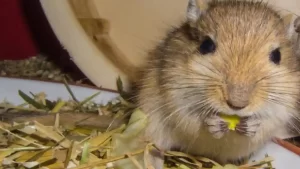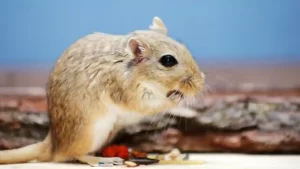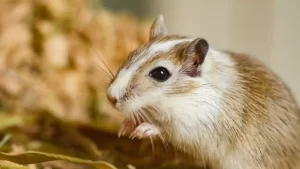Although hamsters are a popular pet, surprisingly few people are familiar with their physical characteristics. If you’re a pet owner, you probably want to know whether hamsters have tails as that is one of their characteristics.
Yes, some hamsters do have tails. Depending on the breed, a hamster’s tail can be quite long and furry or very short and almost invisible. The tail ranges in length from one to three inches and is usually covered with fur that is lighter in color than the rest of the body.
The purpose of a hamster’s tail is primarily for balance when running or climbing but also acts as an additional source of protection from predators. A hamster’s tail can also be useful for storing food, as the extra fur on it helps to protect it from dirt and moisture.
It is important to note that a hamster’s tail should never be pulled, even if it seems like they want you to do so. If your hamster does have a tail, handle them gently, and be sure to brush their coat regularly to keep their tails healthy and clean.
The hamster breed is a unique creature that comes in all shapes and sizes, but one thing is for certain: some of them do indeed have tails! Whether long or short, furry or almost invisible, a hamster’s tail is an essential part of its anatomy and should always be treated with care.
Is Hamster a Good Pet?
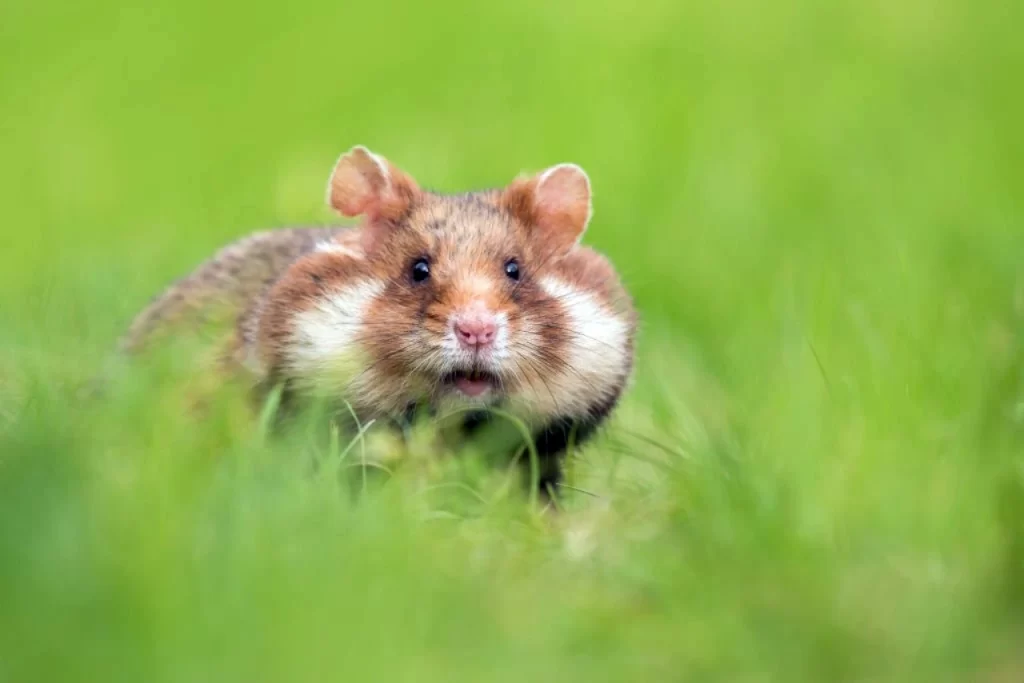
As animal enthusiasts, we want those species that are simple to care for in our homes. The majority of you surely desire to keep a hamster in your home, but you may also be thinking if hamsters make good pets.
Hamsters make great pets, particularly for children. They are small and easy to care for, so they don’t require a large space or a lot of time. Hamsters can also be very social animals and can develop strong bonds with their owners.
In terms of cost, hamsters are relatively inexpensive to own. Basic supplies such as food, bedding, and housing will not set you back too much money compared to other pets. In addition, many pet stores offer discounts on hamsters throughout the year so keep an eye out for those!
When it comes to health concerns, hamsters are generally quite hardy animals that rarely have any major ailments. Proper diet and exercise can help ensure your hamster stays healthy and active.
However, it’s important to remember that hamsters are susceptible to certain illnesses and require regular veterinary checkups.
All the hamster breeds are much similar so owning a hamster can be quite rewarding. Watching your pet interact with you and explore its habitat can provide hours of entertainment for the whole family. Even if you don’t have children, adopting a friendly little hammy will bring joy into your life.
How Many Types of Hamsters Are There?
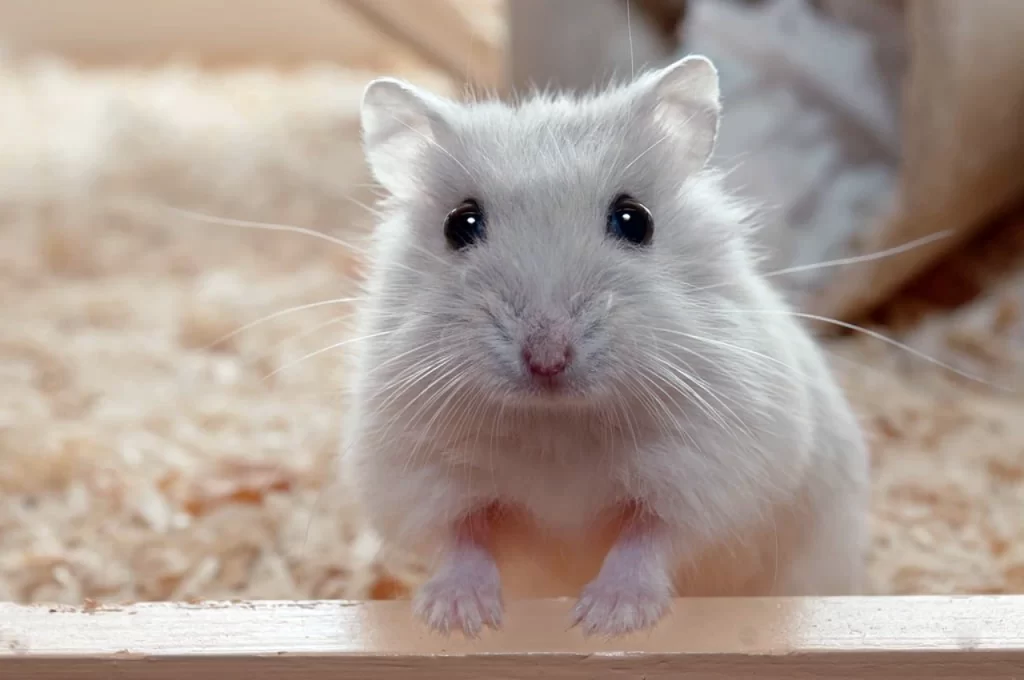
Hamsters are one of the most popular pet choices, and there is a wide variety of types available for new owners to choose from. Depending on their country of origin and size, hamsters can be divided into several groups:
Let’s take a quick look at some of its types:
Syrian Hamster :
Syrian hamsters are also known as golden or teddy bear hamsters, Syrian hamsters are often considered the “classic” type of hamster.
They have thick fur, and short tails and come in various colors. Syrian hamsters grow up to seven inches in length and are solitary animals that do not like to be held or cuddled.
Dwarf Hamsters:
These include Campbell’s Dwarf Russian hamster, the Djungarian Dwarf hamster, Roborovski Dwarf hamster, and the Chinese Dwarf hamster.
Dwarf hamsters are smaller than Syrians, usually reaching about 4 inches in length. They are social animals and can live in pairs or small groups, but should not be housed together with Syrian hamsters as they may fight.
Roborovski Hamster :
Also known as desert hamsters, these creatures have sandy fur with white underbellies and grow to about 2-3 inches long. Roborovski tends to be fast and agile, making them difficult to handle for longer periods.
Chinese Hamster :
Chinese hamsters are mouse-like in size and appearance, growing up to 5 inches long. They have a slender body shape and often come in agouti, white or grey colorations.
Chinese hamsters are solitary creatures and do not like to be handled, though they can become tame if handled with patience and gentleness.
Winter White Hamster :
A small species of hamster that is much like a dwarf in size (reaching about 4 inches in length). They have thick fur coats that turn white during the winter months as an adaptation for survival in cold climates.
These hamsters tend to be more social than Syrians but should still only be housed together with other Winter White hamsters.
Syrian hybrids:
Also known as fancy hamster breeds, these are a mix of different species such as the Syrian, Chinese, Winter White, Roborovski, and Dwarf Campbell’s Russian. Hybrids are bred to create unique color patterns and have been increasingly popular in recent years. They often grow to be longer than Syrians, reaching up to 8 inches in length.
Russian Dwarf Hamsters:
Russian dwarf hamster is among the smallest pet rodents available and is a popular choice for owners who want an easily tamed, low-maintenance companion. Russian dwarf hamsters are intelligent, and playful and often bond with their owner. They can live up to two years in captivity when properly cared for.
Russian dwarf hamsters need plenty of exercise to stay healthy. Regular playtime outside of its cage will help keep its mind active and prevent boredom or restlessness. Providing plenty of toys and tunnels for exploration can also help your pet stay entertained and engaged.
No matter which type of hamster you choose, they all make wonderful pets with their sweet personalities and adorable faces. With a little bit of research and care, any hamster owner can give their pet the best life possible!
Have hamsters got tails?
Hamsters have special traits that make them unique among rodents. One of these is the presence of a tail – while many other rodents have short tails, hamsters typically have none at all. Some of you may have some confusion about hamster tails.
Yes, hamsters do have tails. Most pet hamsters have long, thin tails that are about one-fifth of their body length. Their tails are usually covered with fur and can help them balance when they climb on objects or run around.
Some species of hamsters, such as the Roborovski dwarf hamsters have very short stubby tails. They still use them for balance but don’t rely on them as much as other types of hamsters do. The tail is also used to regulate their temperature because it helps dissipate heat from their bodies.
If you have a hamster as a good pet then you should also know that female hamsters use their tail to mate with male hamster, so their tail has great significance. All in all, a hamster’s tail is an important part of its anatomy.
What is the purpose of a hamster’s tail?

Hamster tails are used as a sensory organ and for balance. They contain scent and touch receptors, which allow hamsters to detect smells and objects around them. The tail also acts like an extra limb, helping the hamster move quickly in tight spaces or maneuver better while running on their wheel.
In addition to these physical benefits, having a tail helps hamsters feel more secure; it is believed that this may help inhibit stress levels in certain situations. While the tail does not provide any essential functions for survival, it can be important for both the mental and physical well-being of your furry friend.
It should be also noted that hamsters prefer to live a simpler life so it’s important to handle your hamster, remember never to pull or tug on its tail — this can cause pain and can lead to injury, even if done unintentionally. It is important to be gentle and handle your hamster carefully so that its tail is not harmed or broken.
How Long Can A Hamster’s Tail Be?
Hamsters’ tails have functionality and they do enjoy living with these tails but as an owner, it’s important to know the length of the tail of our furry friend.
Hamsters tail length by breed range from almost no visible tail at all to some with tails that reach up to 4 inches (10 cm) long.
The most common species of pet hamster, the Syrian or Golden Hamster, typically has a short stubby tail about half an inch (1.3 cm) long.
Dwarf hamsters tend to have longer tails than Syrians, ranging from 1-2 inches (2-5 cm). Roborovski hamsters usually have the longest tails of any species and can reach up to 4 inches in length!
No matter what the length of your hamster’s tail is, it should not be handled except when necessary for medical treatment or emergencies. If a hamster’s tail is pulled or injured, it can cause pain and discomfort for the animal.
Why are hamsters’ tails so short?
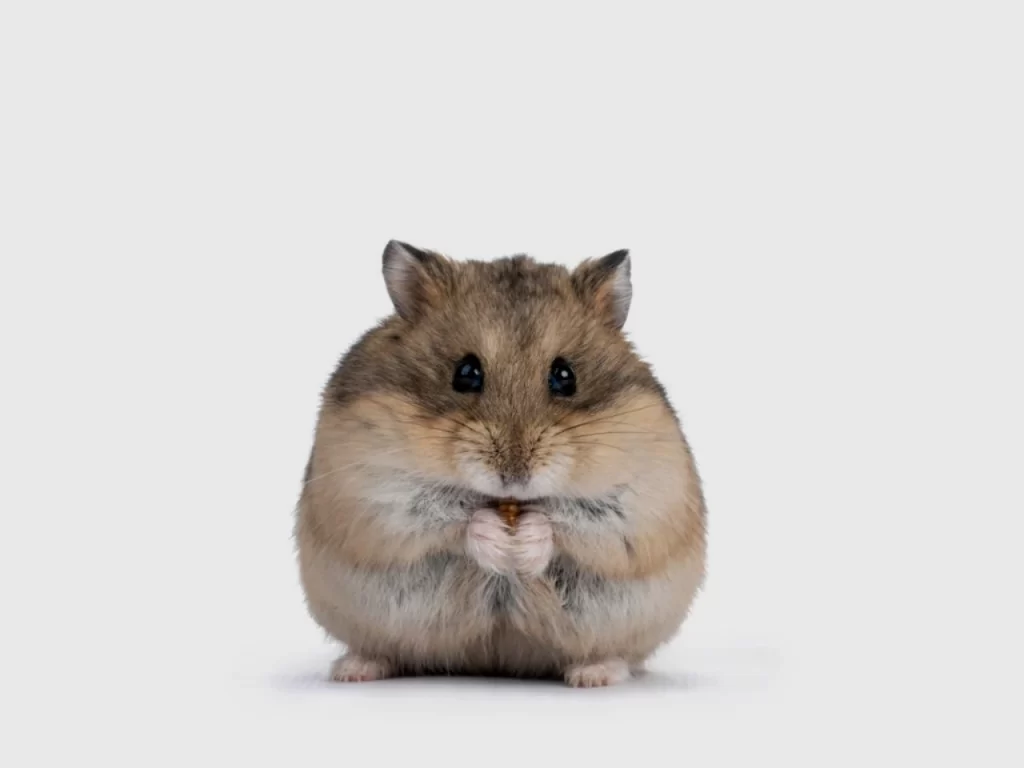
There must be some query about the pet hamster’s tails, You must have seen your pet will have longer tails or shorter but you may be wondering why your hamsters have such short tails.
Hamsters have short tails because they are a type of rodent known as the Muridae family. This means they are related to mice and rats, which also have shorter tails than other animals.
The Hamster’s tails help them move more quickly and efficiently in their small burrows. They use their tails for balance, temperature regulation, and communication with other hamsters. However, a Chinese hamster’s tail is long which allows them to be different from other hamster breeds.
Additionally, Chinese hamster tails grow up to full length which protects them from predators by keeping them hidden when they curl up into a ball. The shorter tail also allows the hamster to turn more quickly while navigating tight spaces or tunnels.
The shape of the tiny tails helps hamster species keep track of where they have been and indicates how much space is left in a particular tunnel before turning around to start again. All in all, the short tail of a hamster serves many important functions and is essential for its survival.
Why Do Hamsters Have Tails?
Hamsters come from the rodent family but many people have confused about their tails. You may also wonder why does this small breed have tails?
Hamsters have tails for a variety of reasons. Hamster tails provide them with balance while they move around. This is especially helpful when navigating difficult terrain and obstacles.
Hamster tail length is used as a means of communication as hamsters use them to signal social cues such as dominance, aggression, or submission. Hamsters also use their tails to store fat, which can be used as an energy reserve during lean times.
Lastly, the longer tail helps keep the hamster’s body temperature regulated in extreme temperatures by providing additional insulation from the elements. In short, the tail serves multiple purposes for hamsters and is an essential part of their anatomy.
What Is wet Tail In Hamster?
Wet tail is a rare condition seen in hamsters. It is characterized by the hamster’s tail being twirled around its body, usually in a circular motion. This behavior can be caused by either genetic or environmental factors and it often leads to behavioral changes.
In some cases, the hamster may become more aggressive and display signs of distress due to the physical discomfort or common hamster illness caused by this condition.
Treatment options include medication and medical procedures depending on the severity of the case. If left untreated, the wet tail can lead to serious health complications such as paralysis and even death in extreme cases.
Therefore, if you notice your pet displaying these symptoms, you must seek veterinary care immediately. With proper treatment and care, your hamster should make a full recovery.
What Are The Wet Tails Symptoms?
The most common symptoms of wet tails include:
1. Restlessness and pacing:
Dogs may pace back and forth, whine, or even bark constantly in anticipation of something happening.
2. Chewing:
Dogs may start chewing on furniture or other items as a way to relieve their anxiety.
3. Loss of Appetite:
If your dog is extremely anxious about something it may lose interest in eating; however, this should not be prolonged or ignored as it can lead to serious health issues if left untreated.
4. Destructive behavior:
Your pup might start digging holes, jumping fences, or engaging in other destructive behaviors due to their need for release from the anxiety they’re feeling.
5. Excessive Drooling:
This is a sign that your pup may be overly anxious, as drooling can be triggered by the release of stress hormones.
If you notice any of these symptoms in your pet, it’s important to take them to the vet right away to diagnose and treat them. With proper treatment, most hamsters can live happy and healthy lives free from wet tails.
Treatments And Preventions Of wet Tails In Hamsters
Treatment and prevention of tail rings in hamsters involves careful observation by the pet owner. If any signs of ill health are noticed, such as decreased appetite or sluggish behavior then the vet should be consulted for proper diagnosis and treatment options.
In orient tail rings in hamsters, it is important to maintain a clean cage environment. This includes daily spot-cleaning, deep cleaning every two weeks, and changing the bedding regularly to reduce the risk of fungal infections and other illnesses associated with unclean conditions. Additionally, owners should choose appropriate bedding materials that are free from harmful chemicals or dyes which can irritate the skin of the hamster.
Good nutrition is also critical in preventing tail rings in hamsters. A balanced diet that includes a variety of fresh fruits and vegetables, along with commercial hamster food, will help to keep the animal healthy and strong.
Finally, it is important to monitor the condition of the tail regularly. If any signs of infection or inflammation are noticed, owners should seek immediate veterinary attention for proper treatment and care. With proper preventive steps and early detection, tail rings in hamsters can be avoided or quickly managed if they do occur.
Can Hamsters Tails Fall Off?
No, hamsters’ tails cannot fall off. Unlike some other rodents, such as rats and mice, hamsters’ tails are fused to their bodies and will not come off or detach. Some breeds of hamsters have shorter tails than others but they do not fall off.
Do Hamsters Tails Grow Back?
No, hamsters cannot regrow their tails. Hamsters are born with tails that are covered in fur and look much like tiny rats ta. Sometimes, the tail may appear longer or shorter due to genetic differences.
Do hamsters have tails like rats?
No, hamsters do not have tails like rats. Hamsters instead have short stubby tails that are usually less than an inch long and covered in fur. In contrast, rat tails are typically about two to eight inches long with a thin layer of fur and some scales on the lower part. While hamsters may look similar to rats due to their small size, they are from different species and therefore have different tail lengths and appearances.
Is there a hamster with a long tail?
No, hamsters do not have long tails. The domesticated variety of the species typically has hairless, stubby tails that are no more than a few centimeters in length.
Wild hamsters may have slightly longer tails, but they are usually still quite short compared to other rodents such as mice or rats.
Hamsters’ tails serve many important functions such as helping them balance during movement and helping regulate their body temperature by trapping heat in cold environments.
Can Hamsters Live Without tails?
No, hamsters cannot live without tails. Hamsters are born with tails to assist their balance and agility when running and climbing. The tail also provides a reserve of energy that the hamster can access when needed. Without this tail, a hamster would be unable to climb or run around properly, making it difficult to survive in the wild.
Final Thoughts:
Hamsters do have tails. While the size of their tail may vary between species, all hamsters possess a small tuft of fur at the base of their spine that acts as a tail.
The purpose of this tail is to help them balance as they climb and scurry around. Despite being small in size, the tails of hamsters can be an important part of their overall physical health and well-being.
As such, hamster owners need to keep an eye on the condition of their pet’s tails and address any issues that might arise. Ultimately, understanding all the features of their traits will make hamsters good pets and you will enjoy their company.
References:
1. https://www.thesprucepets.com/types-of-hamsters-1238195
2. https://animalcorner.co.uk/small-mammals/hamsters/types-of-hamster/


